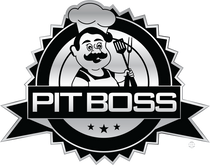Lamb Cuts
Lamb is a great source of protein, vitamins and minerals, but just be sure to choose leaner cuts on most occasions, reserving the fattier pieces for weekend treats.
This part of the animal is a hard worker, so the meat from a shoulder is full of flavor. It’s a slow cooker since it takes a while to become tender, but this means it’s a great choice for stewing and slow-roasting. To maximize the flavor, cook lamb shoulder on the bone until the meat simply falls apart when pulled with a fork. Recipes using lamb shoulder are typically fail-safe crowd pleaser for a perfect Sunday lunch or for a more feisty dish.
Lamb chops or cutlets are the most expensive cuts of lamb but are incredibly delicious and tender. They are taken from the ribs of the lamb and cooked individually, normally over a grill or a barbecue. When a number of them are left together and cooked as a whole, they’re called a rack of lamb. Chops and racks can be French trimmed, where the meat is scraped from the ends of the rib bones, which looks super-impressive on a plate.
These are mini T-bone steaks cut from the waist of the lamb. On one side of the chop is the lamb loin and on the other side is the fillet. Just like chops, they’re great for grilling or barbecuing.
The rump comes from the back of the lamb. This cut is lean, tender and full of flavor – just be careful not to overcook as it will become tough if left to dry out. It is delicious pan-fried whole, finished in the oven for a few minutes, then sliced to reveal its blushing pink center. Or, it can be cut into chops on the bone then grilled or pan-fried.
Like the shoulders, the legs of a lamb work hard, which means that this cut has a good, strong flavor. Leg of lamb is great roasted whole on the bone or boned and barbecued. It’s a fairly lean muscle, so take care not to overcook it, or else it could end up quite dry. Rub it all over with a herb oil, some garlic and even a little mustard, if you like, roast in the oven, then finish off on the barbecue to get a great gnarly smoked flavor. This is a great one for a weekend spent with family, or when entertaining a big group.
Lamb shank is a super-simple, cheaper cut that goes a long way. Taken from the lower part of the back legs, there is a lot of collagen in the shank, which, when cooked slowly, gives the meat a lovely soft, melting texture, making this another cut that’s perfect for stews and slow-cooking.
Neck is a cheap cut and available at supermarkets and butchers. It is left connected to the shoulder, but a good butcher should be willing to separate it out for you. Lamb neck can be cooked slowly on a low heat, yet unlike the shoulder, it can also be treated like a steak and cooked quickly over a high heat until pink. It goes well with a whole load of flavors and is delicious served with a great mash when cooked low and slow. It works really well as a stew or curry and is a great cut of meat to make kebabs with, too.

 France
France Germany
Germany Netherlands
Netherlands Norway
Norway Sweden
Sweden Finland
Finland Denmark
Denmark


